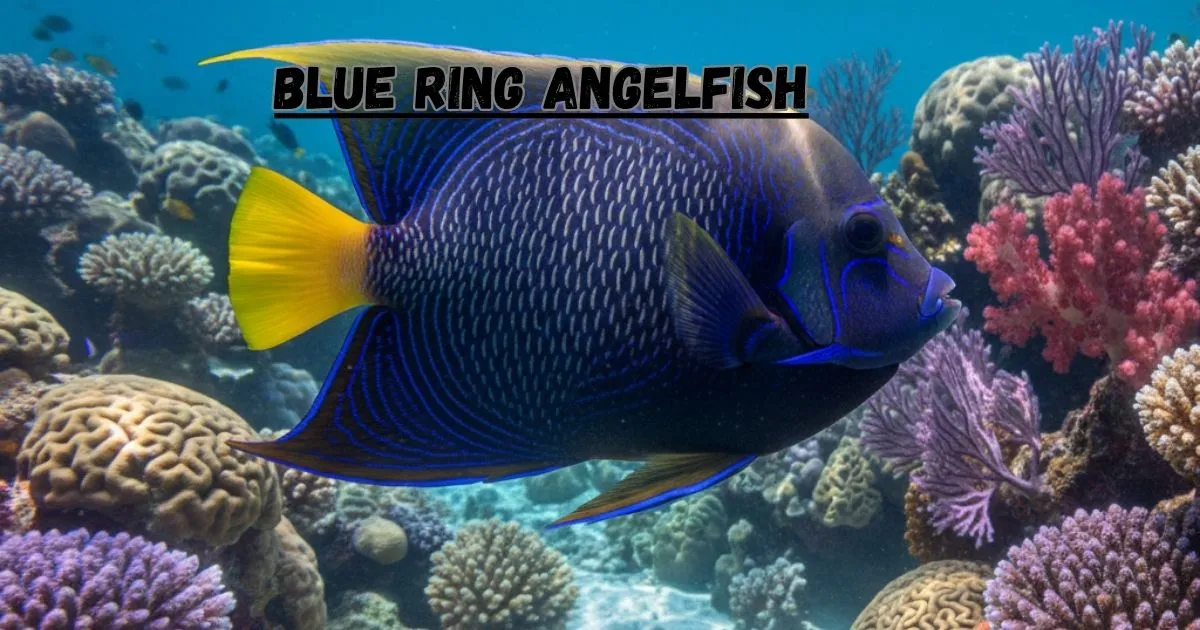Imagine diving into a colorful coral reef, surrounded by vibrant fish darting in every direction. Among them, one fish stands out with its dazzling patterns and bright hues: the blue ring angelfish. Scientifically known as Pomacanthus annularis, this fish is a true gem of the Indo Pacific reefs. You might hear it called the bluering angelfish or even the annularis angelfish, all names for the same stunning creature that catches the eye with its unique blue ring above the operculum, that’s the bony flap covering its gills.
So, why is this fish so fascinating? Well, it’s not just about its looks. The blue ring angelfish has some interesting behaviors and traits that make it special both in the wild and in home aquariums. This guide will take you on a journey through everything you should know about this captivating fish, from its natural home and what it eats to how it behaves and how you can care for it if you want to bring a bit of reef magic into your living room.
Physical Description and Unique Features
Let’s talk about looks because the blue ring angelfish is hard to miss! Picture this: a mostly yellow orange body decorated with curvy blue lines that seem to dance across its sides. These lines aren’t just random; they run horizontally from just behind the head all the way to the tail fin. Speaking of the tail, it’s white with a splash of yellow along the edges, kind of like a fancy paintbrush stroke.
One of the coolest features is the bright blue ring just above the operculum. It’s like a glowing badge that gives this fish its name. If you get up close, you’ll also notice two striking blue stripes crossing its face, one running right through its eye, and the other lines up just below it.
Now, don’t confuse juveniles with adults. Baby blue ring angelfish live a different style. They’re mostly bluish black with thin, white or blue curved lines. It almost looks like the fish is wearing tiny zebra stripes before growing up to sport its fancy coral colored outfit. The adult fish can grow up to 18 inches, making it a rather large and impressive reef dweller.
Natural Habitat and Distribution
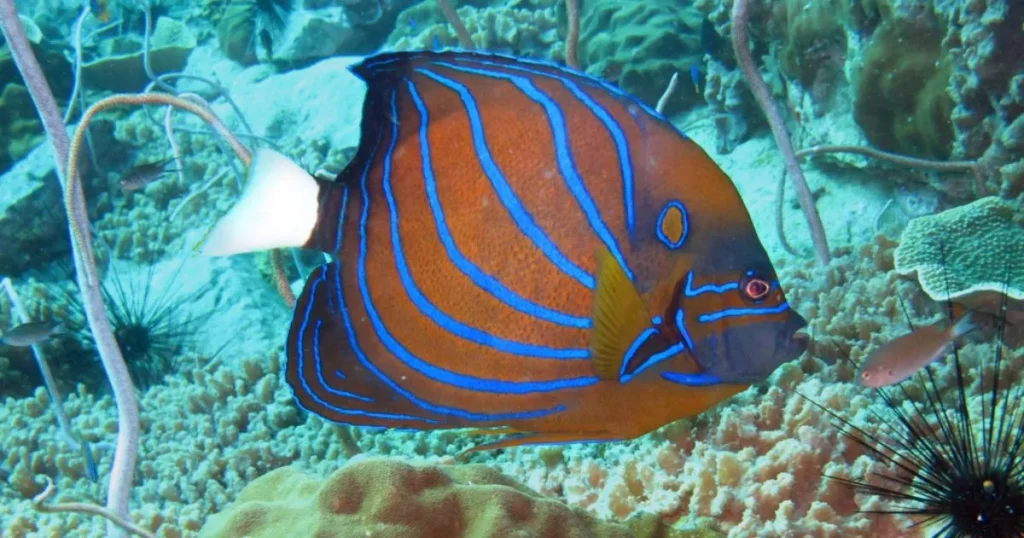
You’ll mostly find blue ring angelfish swimming around coral reefs in the warm, shallow waters of the Indo Pacific region. That’s a big stretch of ocean starting near Sri Lanka, moving across the Solomon Islands, through the Philippines, and down to the northern parts of Australia. If you ever go snorkeling or diving in these spots, keep an eye out for rocky coral reefs, caves, or even shipwrecks where these fish like to hang out.
They usually stay between 3 to 30 meters deep, which is about 10 to 100 feet, not too deep, so swimmers and divers can get a good look. They love places with lots of coral because it offers food, safety, and lots of room to swim. In fact, these reef slopes and coastal areas are perfect for the blue ring angelfish to show off all those beautiful lines and colors.
Diet and Feeding Behavior
The blue ring angelfish isn’t picky when it comes to food, but it does have a favorite menu. In the wild, it mainly feasts on tiny animals like zooplankton, sponges, and tunicates (which are small sea creatures attached to rocks). It’s also not shy about munching on algae or sea squirts, a bit like a little herbivore meets carnivore. This varied diet makes it an omnivore, meaning it can eat both plants and animals.
If you’re thinking about keeping one in an aquarium, knowing what to feed it is super important. These fish prefer a mix they’ll happily snack on mysis shrimp, high quality algae based foods, and sometimes even bits of coral polyps (though that can be tricky in reef tanks). Feeding them about 2 to 3 times a day with a varied diet keeps them healthy and vibrant.
Reproduction and Life Cycle
Here’s where things get really fascinating. Blue ring angelfish are what scientists call “protogynous hermaphrodites.” Now, that sounds complicated, but it just means the fish starts out life as a female and can later change into a male. Think of it as a fish version of transformation. Juveniles are always females, but as they grow bigger and older, some switch to being males.
When it’s time to find a mate, males will protect a territory that includes two to five females. This social setup is called a harem. The courtship is all about timing and ritual usually happening near dusk, both male and female swim together and release eggs and sperm into the water to start the next generation.
After a day, the eggs hatch, and the larvae join the tiny plankton drifting in the sea. They stay with this plankton group for about a month before growing large enough to swim down and settle into the reef as juveniles, ready to begin their colorful life.
Social Structure and Behavior
The blue ring angelfish is quite the character in reef communities. Adults tend to be solitary or live peacefully in pairs, especially during breeding. Males are bossy and hold their ground, fiercely defending their territories from rivals. This territorial behavior means you might see them chasing off other fish trying to move in.
In their natural coral reef homes, they’re often found near caves or rocky spots where they can hide or rest at night. Their social structure, with one male watching over multiple females, ensures a stable group dynamic and keeps the population thriving.
If you’re thinking of keeping them with other fish, be aware that they can be a bit aggressive, especially with similar species or other angelfish. It’s like they want to be the star of the show!
Aquarium Care Essentials
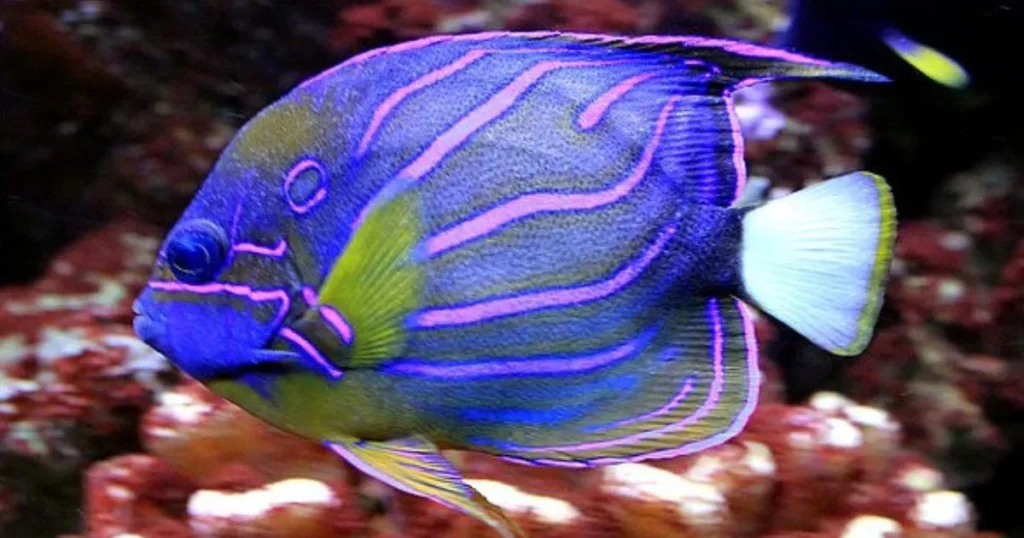
Thinking about making your home a slice of the reef? These fish are definitely showstoppers but need care to match. A blue ring angelfish requires a fairly large aquarium, at least 75 gallons, because they love to swim and need space to establish their territory.
Water temperature should stay between 74 and 82 degrees Fahrenheit, with a steady pH level around 8. Lighting and water quality play a big role in keeping them happy. Since they naturally feed on a variety of things, make sure you offer a mix of algae, frozen mysis shrimp, and other suitable foods.
Be careful with tank mates! Since these angelfish can be semi aggressive, avoid crowding the tank with other similar fish. Reef safe species that aren’t too shy or aggressive work best. Also, be cautious if you keep corals because this fish may nibble on some parts, so careful monitoring is key.
Conservation Status and Environmental Impact
Good news for fans of the blue ring angelfish, currently, it’s listed as Least Concern in terms of conservation. They’re doing okay in the wild, but like many reef species, they face threats like habitat loss due to pollution and climate change. Coral reefs are especially vulnerable, which means protecting these environments is vital for the fish’s survival.
The aquarium trade does collect these fish from the wild, mostly from places like Sri Lanka, where they are exported to Europe and the US. Sustainable practices and ethical collecting are important to ensure we don’t harm wild populations. Supporting responsible sellers and raising awareness helps keep the ocean’s colors alive.
Lifespan and Growth
In the wild, blue ring angelfish can live for many years, and in captivity, some have been known to reach 20 to 25 years. With proper care, that’s a lifetime commitment! They grow steadily, starting out small as juveniles and reaching their adult size of about 18 inches over a few years.
Keeping them healthy and stress free with good water and a proper diet helps them live long, vibrant lives. So, if you bring one home, think of it as welcoming a new friend for decades to come.
Blue Ring Angelfish in Cultural Context
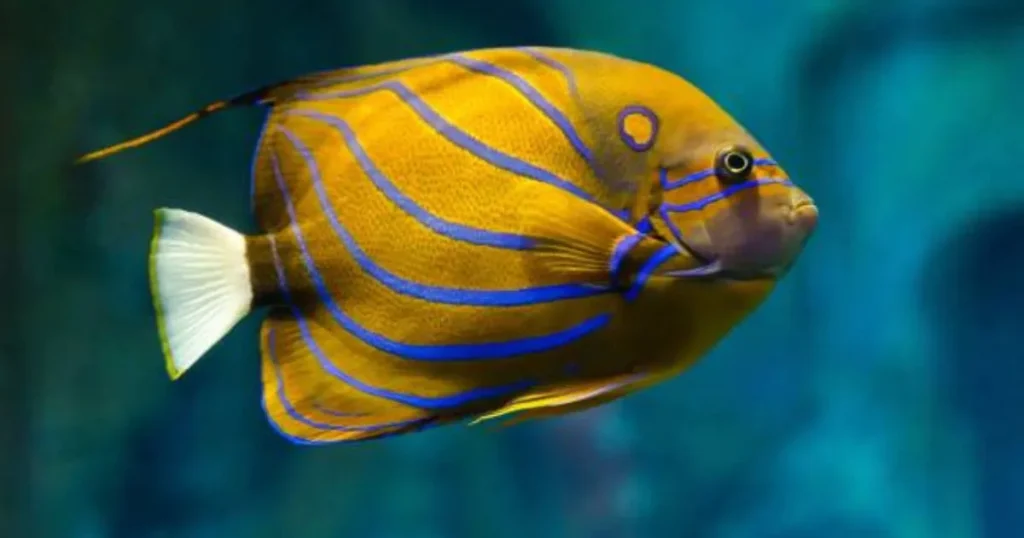
Did you know these fish also have a bit of a spotlight beyond the reef? While not a common household name in culture, their stunning appearance makes them favorites among divers and underwater photographers, contributing to ecotourism in tropical regions. Many local communities benefit from tourists who want to see this living jewel in its natural habitat.
Some cultures view colorful reef fish as symbols of beauty and nature’s richness, adding a layer of magic to how we value these creatures.
FAQs
Can blue ring angelfish live with corals?
They can live in reef tanks, but caution is needed. They have been known to nip at soft and some hard corals. If you want to keep corals with them, monitoring their behavior closely is important.
How do you tell the difference between males and females?
This is tricky because juveniles and females look similar, and males only develop distinct sizes and some behavioral traits as they mature. Generally, bigger individuals defending territories are males.
Summary and Future Research Directions
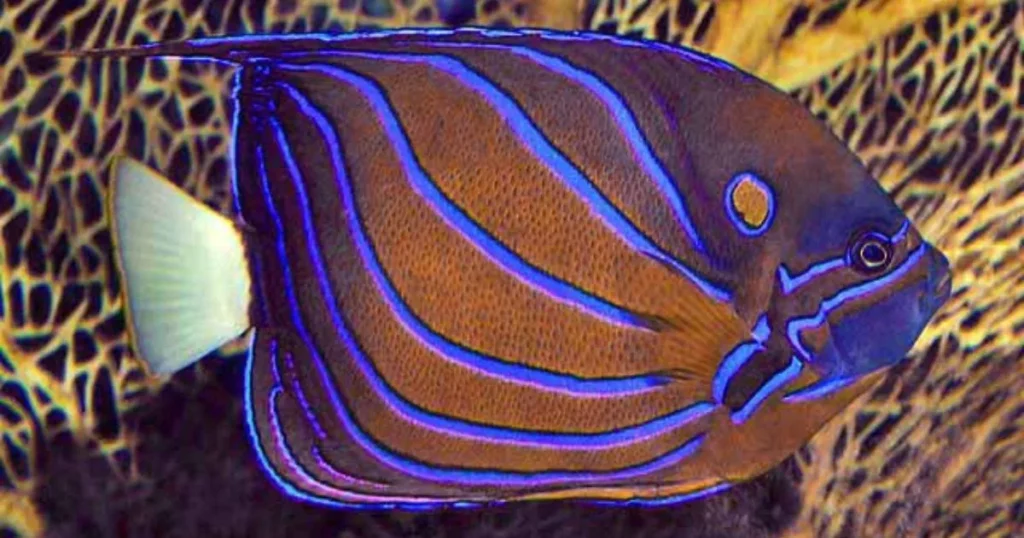
The blue ring angelfish is more than just a pretty face on the reef. It’s a fascinating fish with unique biological traits like changing sex during its life, complex social behaviors, and beautiful, changing coloration through its development. Careful aquarium husbandry and respect for their natural habitats are essential to keeping these fish healthy, whether in the wild or at home.
While we’ve learned a lot, questions remain, such as how climate change might affect their reef homes long term and how population dynamics shift with environmental changes. Continued research and conservation will help ensure this radiant reef beauty continues enchanting divers and fish lovers for generations.
